On This Page:
A leaky faucet is more than just an everyday annoyance. According to the Environmental Protection Agency (EPA), a faucet that drips one time per second wastes upwards of 3,000 gallons of water each year — that’s enough water to take 180 showers. If you live in a municipality where water comes at a high price, taking as little as one hour to repair a leaking kitchen faucet is not just a way to save money — it’s a way to save the planet.
Step-by-Step Repair Guide: Single-Handle Rotary Ball Faucet
Fixing a rotary ball faucet leak is an easy task for most homeowners — even those with little plumbing experience.
How to Repair a Leaky Rotary Ball Faucet
Expect these five faucet-mending steps to take about an hour:
- Turn off the water to the sink. You can use the valve under your sink or the water main itself. Once your water is off, open the faucet to drain excess water. Plug the sink drains to prevent small parts from falling in during the repair.
- Detach the handle from the faucet by lifting it up and using an allen wrench to remove the screw found on the handle’s underside. Set the screw in a safe place.
- Use slip-joint pliers to loosen and lift the dome assembly to reveal the bonnet, ball and cam. Remove the plastic cam and ball with needle-nose pliers. Inspect the ball for signs of wear, cracking and sediment buildup. If you notice any problems, replace the ball immediately.
- Use a flat-head screwdriver to remove each O-ring and spring set located below the ball. Take note of each spring’s orientation and then replace the set with the new one from the repair kit. Make sure to orient the spring in the same manner as the set.
- Reassemble the faucet by reversing the above steps.
Tools & Materials Needed
The materials and tools needed to repair a rotary ball faucet are basic. Make sure the tools you have are specially designed for the make and model of your faucet. Kits normally cost anywhere from $8 to $35, depending on your faucet model. You’ll spend about half a day on this project, depending on any extra problems that pop up and what materials you’ll have on hand.
As such, make sure you have:
- Allen wrenches
- Slip-joint pliers
- Needle-nose pliers
- Flat-head screwdrivers
Learning About Your Faucet
Most kitchen faucets operate on a single-handle system. Single-handle faucets allow users to regulate their water temperature by adjusting the handle’s position to the left (hot) or right (cold).
Common Kitchen Faucet Parts
Locating the basic elements of your kitchen faucet helps in the repair process. While different models of faucets may have slightly different designs and details, the following parts are found in all single-handle kitchen faucets:
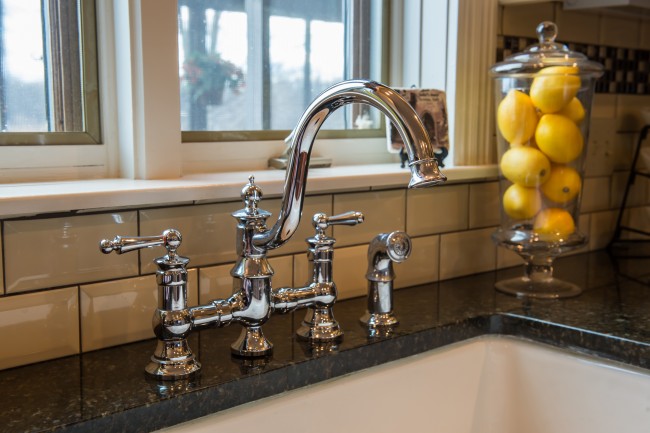
Spout: Located at the outer end of the faucet, the spout is the point of origin for the stream of water.

O-Rings: These plastic or rubber rings provide a tight seal between the spout and handle, allowing water to flow from the spout without leaking.

Dome Assembly: The dome assembly hides the faucet’s mechanical elements and gives it a sleek, uniform look.
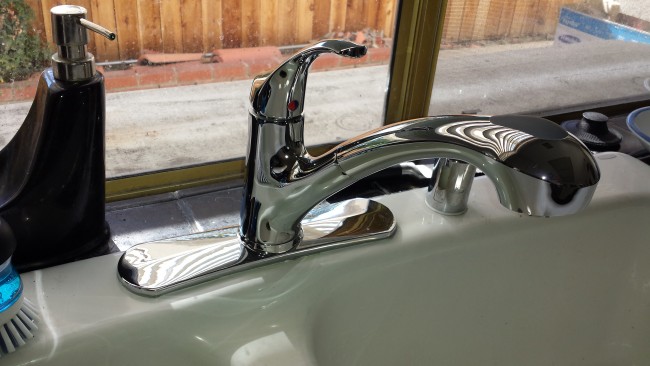
Handle: The uppermost part of the faucet that regulates water flow and temperature.
What Type of Faucet Do You Have?
Aside from common mechanical features, the remaining details of a kitchen faucet vary depending on the type. While the general function of single-handle faucets is the same, the following details make repairs slightly different:
Rotary Ball Faucet
A hollow ball located underneath the dome assembly controls the water flow and temperature. Common repairs include installing a new rotary ball and replacing the O-rings, springs or seats. Repair leaks at the base of your faucet by tightening the adjusting ring under the dome housing.
Cartridge-Style Faucet
Cartridge-style faucets use O-rings and a retainer clip to regulate water temperature and flow. To stop a leak, replacing the rings, clip or entire cartridge if necessary.
Ceramic Disc Faucet
Technically a subtype of the cartridge-style faucet, ceramic disc faucets use a series of discs and O-rings to regulate water flow. Ceramic disc faucets rarely need repair and often come with a lifetime guarantee.
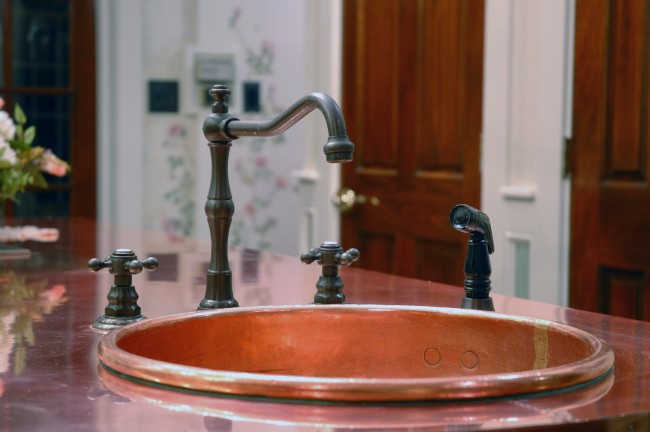
 Get to Know Kitchen Faucets
Get to Know Kitchen Faucets  A Guide to Building an Affordable Kitchen Island
A Guide to Building an Affordable Kitchen Island  When to Call a Hot Water Dispenser Technician
When to Call a Hot Water Dispenser Technician 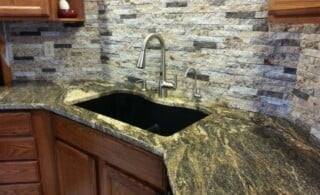 Corner Bathroom and Kitchen Sinks
Corner Bathroom and Kitchen Sinks 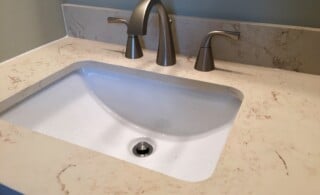 Removing Bathroom Fixtures When Remodeling
Removing Bathroom Fixtures When Remodeling 

Are You Familiar With This Topic? Share Your Experience.